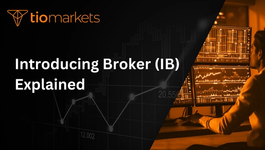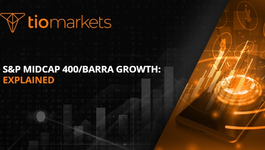Call Option Definition - TIOmarkets
BY TIOmarkets
|June 4, 2024Understanding the intricacies of financial instruments is crucial for traders and investors aiming to navigate the Forex market effectively. Among these instruments, the call option stands out as a versatile tool for speculative strategies or hedging risk. This article delves into the definition, mechanics, and strategic use of call options, tailored for those seeking to enhance their trading acumen.
What is a Call Option?
A call option is a financial contract that gives the buyer the right, but not the obligation, to buy an underlying asset at a predetermined price (strike price) within a specific time frame. It's a cornerstone of options trading, embodying the potential for profit in rising markets without the full financial burden of owning the asset outright.
Key Characteristics
Call options are defined by several key characteristics that determine their value and suitability for specific trading strategies. These include the strike price, expiration date, and the premium paid for the option. Understanding these elements is essential for effective trading.
The strike price is the agreed-upon price at which the option can be exercised. The expiration date specifies when the option expires and can no longer be exercised. The premium is the price paid upfront for the option, reflecting its intrinsic and time value.
How Call Options Work
When a trader buys a call option, they are essentially betting that the price of the underlying asset will rise above the strike price before the option expires. If this happens, the trader can exercise the option to buy the asset at the lower strike price, potentially selling it at the current market price for a profit. If the market price does not exceed the strike price, the option expires worthless, and the trader's loss is limited to the premium paid.
This mechanism offers a leverage effect, allowing traders to control a larger amount of the underlying asset with a relatively small investment (the premium), amplifying potential returns while also increasing risk.
Benefits of Trading Call Options
Call options offer traders and investors several advantages, including leverage, flexibility, and risk management capabilities. These benefits make call options a popular choice for various trading strategies.
Leverage and Profit Potential
One of the most attractive features of call options is the leverage they provide. Traders can control a significant position in an underlying asset with a relatively small investment (the premium), potentially leading to substantial profits if the market moves favorably.
However, it's crucial to remember that while leverage can amplify profits, it also increases the potential for losses, making risk management paramount.
Flexibility in Trading Strategies
Call options can be used in a multitude of trading strategies, from straightforward speculative bets on market direction to complex combinations with other options or financial instruments for hedging purposes. This versatility allows traders to tailor their approach to their market outlook and risk tolerance.
Risk Management
Another significant advantage of call options is their ability to help manage risk. The maximum loss on a call option is limited to the premium paid, providing a clear risk parameter. This feature is particularly appealing for hedging, as it allows traders to protect other positions or their portfolio against adverse market movements.
Considerations and Risks
While call options offer numerous benefits, they also come with specific considerations and risks that traders must be aware of to use them effectively.
Understanding Premiums
The premium of a call option is influenced by various factors, including the underlying asset's price, volatility, time until expiration, and the risk-free interest rate. Traders need to understand how these factors affect premiums to make informed decisions.
Time Decay
Options are time-sensitive instruments, meaning their value decreases as the expiration date approaches, a phenomenon known as time decay. Traders must consider time decay in their strategies, especially when holding options near their expiration.
Risk of Loss
While the maximum loss on a call option is limited to the premium paid, the likelihood of the option expiring worthless is a significant risk. Traders should carefully assess their risk tolerance and potential for loss when trading call options.
Strategic Use of Call Options
Understanding how to strategically use call options can significantly enhance a trader's performance in the market. By employing various strategies tailored to different market conditions, traders can optimize their risk-reward profiles and capitalize on opportunities.
One common strategy is the covered call, where an investor holds a long position in an asset and sells a call option on the same asset. This strategy generates income from the premium received while potentially limiting upside gains if the asset's price rises above the strike price.
Another popular strategy is the protective put, which involves buying a put option to protect against potential downside risk in a long position. This strategy acts as insurance, allowing traders to limit losses if the market moves against their position.
Additionally, traders can implement spread strategies using call options, such as bull call spreads or bear call spreads, to capitalize on specific market outlooks while managing risk exposure. These strategies involve simultaneously buying and selling call options with different strike prices to create a spread position.
Advanced Option Strategies
For experienced traders looking to delve deeper into options trading, advanced strategies offer sophisticated ways to leverage market opportunities and manage risk effectively. These strategies often involve combinations of call and put options to create complex positions with specific risk-reward profiles.
One such strategy is the straddle, where a trader buys a call option and a put option with the same strike price and expiration date. This strategy profits from significant price movements in either direction, regardless of market direction, but requires substantial price movement to be profitable due to the cost of purchasing both options.
Another advanced strategy is the iron condor, which involves selling a call spread and a put spread simultaneously. This strategy profits from low volatility and limited price movement within a defined range, making it suitable for sideways or range-bound markets.
Market Analysis and Call Options
Integrating market analysis into call option trading can enhance decision-making and improve trading outcomes. By combining technical analysis, fundamental analysis, and market sentiment, traders can gain valuable insights into potential price movements and make informed trading decisions.
Technical analysis involves studying historical price data and chart patterns to identify trends and potential entry or exit points for trades. By analyzing indicators like moving averages, relative strength index (RSI), and Bollinger Bands, traders can gauge market momentum and potential reversal points.
On the other hand, fundamental analysis focuses on evaluating the underlying factors that drive asset prices, such as economic indicators, company earnings reports, and geopolitical events. Understanding these fundamental drivers can help traders anticipate market movements and make informed decisions based on broader market trends.
Market sentiment analysis involves assessing the overall mood and attitude of market participants towards a particular asset or market. By gauging sentiment through tools like the put/call ratio, investor surveys, and news sentiment analysis, traders can identify potential market turning points and sentiment-driven price movements.
Combining Analysis Techniques
Successful traders often combine multiple analysis techniques to form a comprehensive trading strategy that accounts for various market factors. By integrating technical, fundamental, and sentiment analysis, traders can gain a holistic view of the market and make well-informed decisions based on a combination of factors.
For example, a trader may use technical analysis to identify key support and resistance levels for a particular asset, fundamental analysis to assess the asset's underlying value and growth prospects, and sentiment analysis to gauge market sentiment towards the asset. By synthesizing these analyses, traders can develop a more robust trading strategy that aligns with their market outlook and risk tolerance.
Conclusion
Call options are a powerful tool in the Forex trader's arsenal, offering leverage, flexibility, and risk management capabilities. However, like all financial instruments, they come with inherent risks that must be understood and managed. By comprehensively understanding call options, traders can better harness their potential to achieve their trading objectives.
At TIOmarkets, we are committed to providing our clients with the knowledge and tools needed to navigate the complexities of Forex trading. Whether you're new to options trading or looking to refine your strategies, our platform offers the resources and support to help you succeed.
Start Trading with Call Options at TIOmarkets
Ready to put your newfound knowledge of call options into practice? Join the ranks of over 170,000 traders across 170 countries who have chosen TIOmarkets for their trading journey. With access to 300+ instruments across 5 markets, including Forex, indices, stocks, commodities, and futures, TIOmarkets offers you a top-rated platform with low fees to maximize your trading potential. Enhance your skills further with our comprehensive suite of educational resources and step-by-step guides. Don't wait any longer to elevate your trading game. Create a Trading Account today and start leveraging the power of call options!

Risk disclaimer: CFDs are complex instruments and come with a high risk of losing money rapidly due to leverage. You should consider whether you understand how CFDs work and whether you can afford to take the high risk of losing your money. Never deposit more than you are prepared to lose. Professional client’s losses can exceed their deposit. Please see our risk warning policy and seek independent professional advice if you do not fully understand. This information is not directed or intended for distribution to or use by residents of certain countries/jurisdictions including, but not limited to, USA & OFAC. The Company holds the right to alter the aforementioned list of countries at its own discretion.
Join us on social media

Behind every blog post lies the combined experience of the people working at TIOmarkets. We are a team of dedicated industry professionals and financial markets enthusiasts committed to providing you with trading education and financial markets commentary. Our goal is to help empower you with the knowledge you need to trade in the markets effectively.





